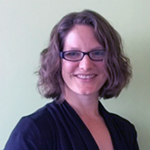 A conversation with Taressa Fraze
A conversation with Taressa FrazeFor patients, health improvement depends on much more than access to good medical care. Addressing nonmedical needs such as housing, reliable transportation, and access to nutritious food is often just as critical. When these needs are met, patients are better able to adhere to treatment plans, manage their physician appointments, and stay out of emergency rooms. Ultimately, that helps keeps the overall cost of care down. Because they tend to approach care from a broader perspective, accountable care organizations (ACOs) may present a good model for addressing patients’ nonmedical needs. We talked to Taressa Fraze, Ph.D., of the Dartmouth Institute for Health Policy and Clinical Practice, lead author of the new Health Affairs study “Housing, Transportation, and Food: How ACOs Seek to Improve Population Health by Addressing Nonmedical Needs of Patients.” |
So why should the health care system help patients meet their nonmedical needs?
To be able to get patients focused on their health care, you need to meet their basic needs. If you’re worried about where you’re going to sleep at night, you’re going to have a tough time making sure your chronic condition is well managed. In addition, if you’re a health care provider that’s part of an ACO, you’re responsible for the total costs of care for a set of patients—and you need to do anything you can to reduce costs. It’s quite challenging, but if you go after social needs, you can have a real impact on both health care costs and on patients’ lives.
Are there disincentives or obstacles that prevent providers from focusing on nonmedical needs?
Absolutely. One of the biggest is that it requires deep expertise. The strategies you use to tackle food insecurity are not the same ones you use to improve housing instability, not to mention helping people get good jobs with benefits. Financial challenges are also a problem. Helping people meet these needs even on an ad hoc basis—like getting a patient a refrigerator to store her insulin—can be expensive, especially if you’re serving a safety-net population. There are also staffing and billing issues, because you can’t typically bill for these services. And finally, providers have a lot of competing priorities, including their primary work of caring for patients with chronic conditions and trying to control utilization.
"To be able to get patients focused on their health care, you need to meet their basic needs. If you’re worried about where you’re going to sleep at night, you’re going to have a tough time making sure your chronic condition is well managed."
How many ACOs did you study? How many were addressing nonmedical issues?
Ours was a qualitative study, which means that we were going out and talking with people. It also means we got to be really selective and chose ACOs we thought had a greater likelihood of working on these types of needs. Of the 32 ACOs we talked to, half were addressing patients’ nonmedical needs. Most often they were working on transportation, housing, and food security.
How were the ACOs you talked to approaching nonmedical needs of patients?
We saw two approaches. The first was working with patients individually. If a patient is meeting with his or her provider and brings up a need, the provider might refer to a care management team within the practice and work on a one-on-one basis to help meet those needs. The classic example is the diabetic who says, “I'm not taking my insulin because I don’t have electricity and I can’t keep it cold.” So then the ACO might find a nonprofit organization in the community to fund electricity for a year.
Instead of focusing on specific patients, other ACOs would work on a solution for an issue, like transportation. For instance, we talked to an ACO that gave patients who have more than three or four visits per month a free monthly bus pass. It can be for taking public transportation to the clinic, but also for other things, like going to work. Another ACO worked really closely with a food bank that prepared and delivered fresh, healthy meals for patients.
What kind of resources were ACOs employing?
They used internal resources—existing staffing, like care management teams. And then external resources, typically community partnerships or purchased services, like for transportation. That means looking at the organizations in your community and finding out what services they offer and what the process is to allow patients to engage with those services. We also saw more sophisticated partnerships where the ACO would work with organizations to develop new programs.
Did you see any particularly innovative models or strategies?
Yes, we saw several innovative programs. One ACO we interviewed in Oregon had a program aimed at “healthy beginnings.” They built a standalone facility for pregnant women that was easily accessible via public transportation and offered classes on child care and prenatal care. The women could earn vouchers for engaging in healthy behaviors, like going to prenatal appointments. They could exchange the vouchers for items to help care for the baby, like diapers.
What kind of policy changes do we need to make to promote these kinds of models?
One of the biggest things we can do is bring nonmedical and social needs to the forefront. They shouldn’t be an afterthought for policymakers, but something they think of as they start to define programs.
